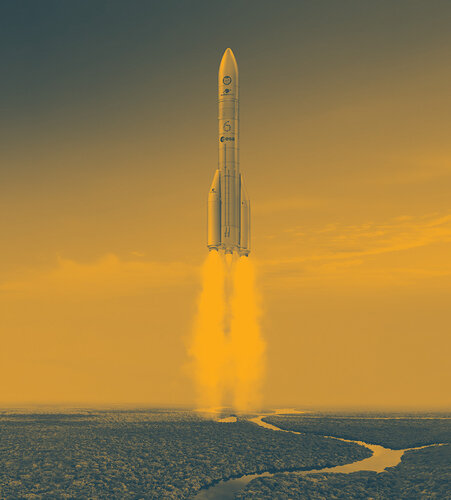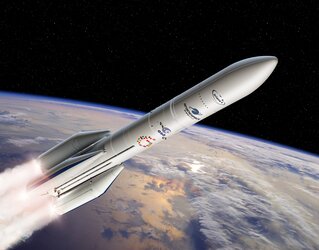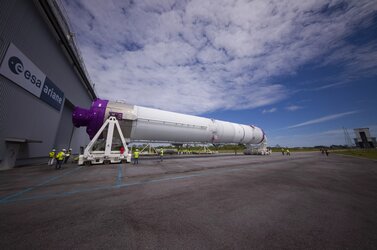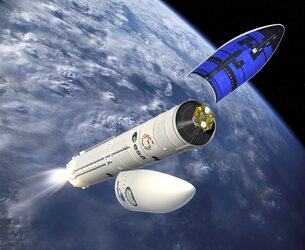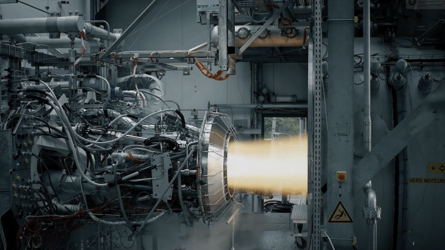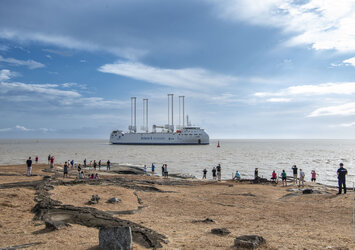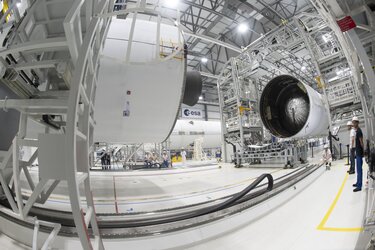Ariane 6 pre-show: wet dress rehearsal complete
Yesterday, the first Ariane 6 rocket to launch into space went through its last full ‘wet dress rehearsal’ at Europe’s Spaceport in French Guiana – it provided an exciting sneak peek of what’s to come, stopping just a few seconds before engine ignition and of course, lift-off.
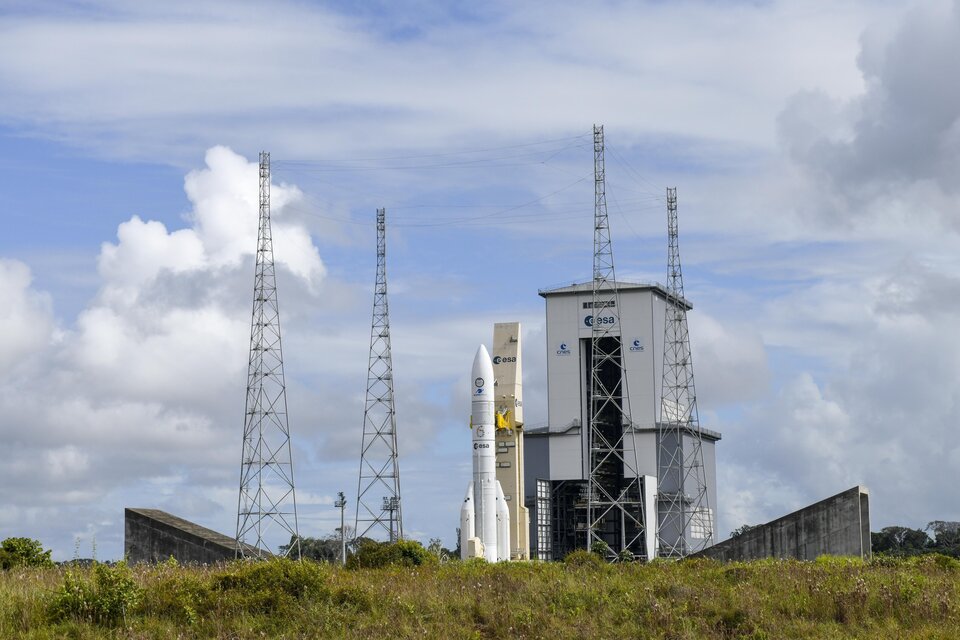
Similar to rehearsals carried out with a test rocket during combined test campaigns, this time the real flight model, its payloads, the launchpad and teams on the ground went through every step of launch operations; from pumping 180 tonnes of propellant – liquid oxygen and liquid hydrogen – into the waiting Ariane 6, the rollback of the mobile gantry, running all of the ground control software and more.
“The wet dress rehearsal is the very final milestone before launch,” says ESA’s Guy Pilchen, Ariane 6 launcher project manager “allowing teams to fine-tune the delicate operations required up until liftoff, using the real rocket’s actual flight hardware and software for the first time.”
Top tip: fill slowly with supercool fuel
One of the first steps was to roll back the colossal 90-m tall Ariane 6 mobile gantry building 120 m away from the launch pad – the first moment the complete rocket stood free.
Pumping fuel into the Ariane 6 then took about 3,5 hours, as technicians at the control centre first began by slowly cooling the pipes, valves, tanks and engines from the tropical temperatures in French Guiana of about 30°C down to the super-chilled temperatures of the soon-incoming cryogenic fuels.


Access the video
As much an art as engineering, the propellants used by Europe’s new rocket Ariane 6 are supercooled to –180°C for the oxygen and –253°C for the hydrogen fuel. At these temperatures, any humidity already in the pipes would immediately freeze and could lead to blocked valves. To avoid this, any hint of air or moisture from the atmosphere was flushed out of the system by the inert (unreactive) gas, helium, before fuelling began.
Once the tanks were full, teams continued topping them up as the liquid fuels would gradually boil away in the Sun. The rocket was subsequently drained of fuel in preparation for launch.
Countdown to just a few seconds

“The rocket, the launch pad and teams from ESA, CNES and ArianeGroup, all put in a great performance, and everything went smoothly – I couldn’t be prouder,” says ESA’s Pier Domenico Resta, “after all these years of preparation we are very close to launch.”
Data from the rehearsal is now being analysed with results expected on 26 June which will confirm the launch date when Ariane 6 will go through the same process, except finally igniting and completing the last few seconds – taking off from Earth for the first time.
We have come a long way
The first parts of Ariane 6 began arriving in French Guiana from continental Europe in February 2024 via the Canopée ‘spaceship’. In March, the main stage and upper stage were assembled, followed by the transfer of the two powerful P120C boosters in April.
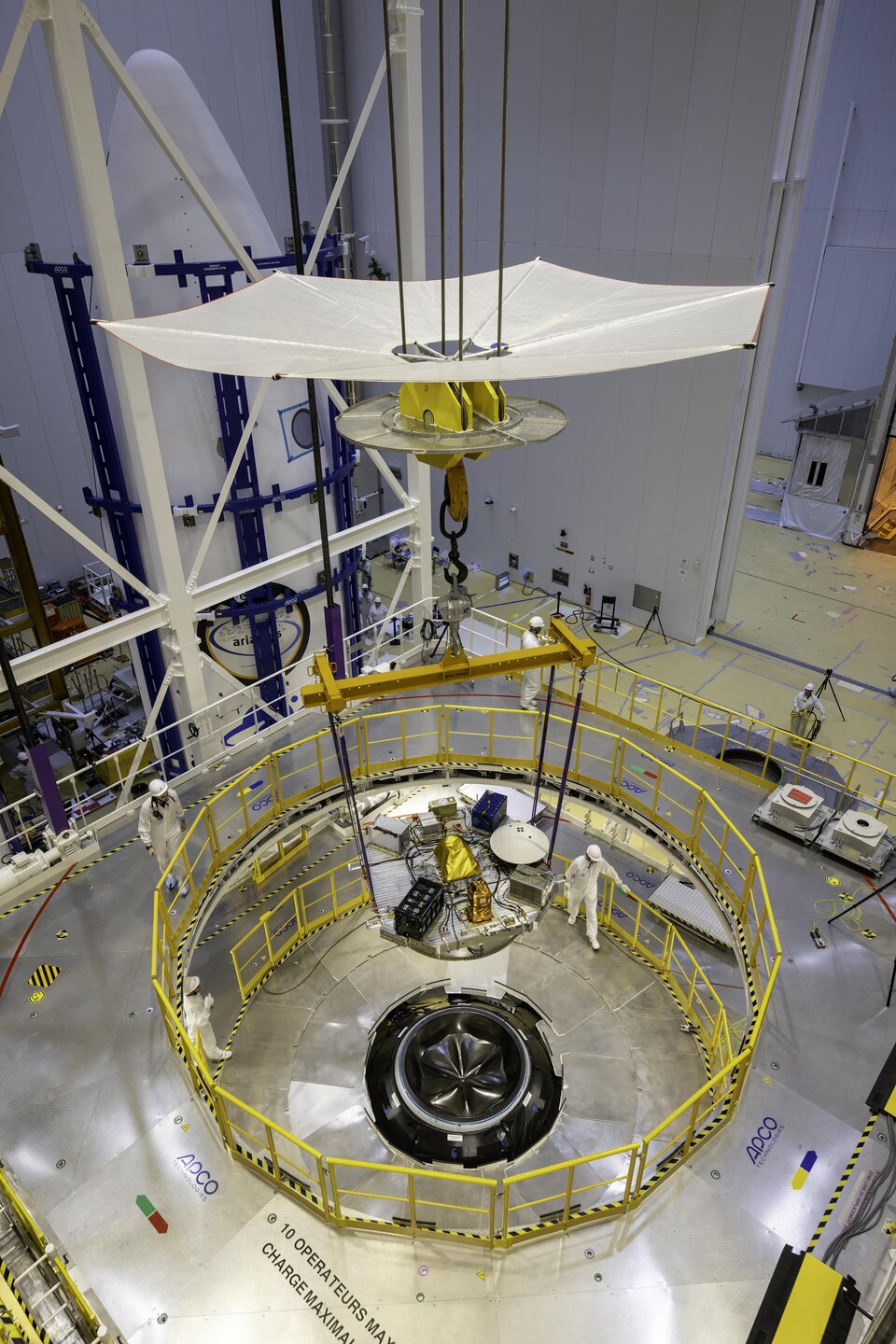
In May, Ariane 6’s first passengers also arrived in Kourou – a varied selection of experiments, satellites, payload deployers and reentry demonstrations that represent thousands across Europe, from students to industry and experienced space actors NASA and ArianeGroup.
The payloads were integrated onto the ‘ballast’ at the end of May, and just a few days ago the ballast was fitted onto the top of the rocket and the fairing closed around it – the last time Ariane 6’s cargo would see light.
From Earth observation to technology demonstrations testing wildlife tracking, 3D printing in open space, open-source software and hardware and science missions looking for the most energetic explosions in the universe, the passengers on Ariane 6’s first flight are a testament to the rocket’s adaptability, complexity, and its role for the future – launching any mission, anywhere.
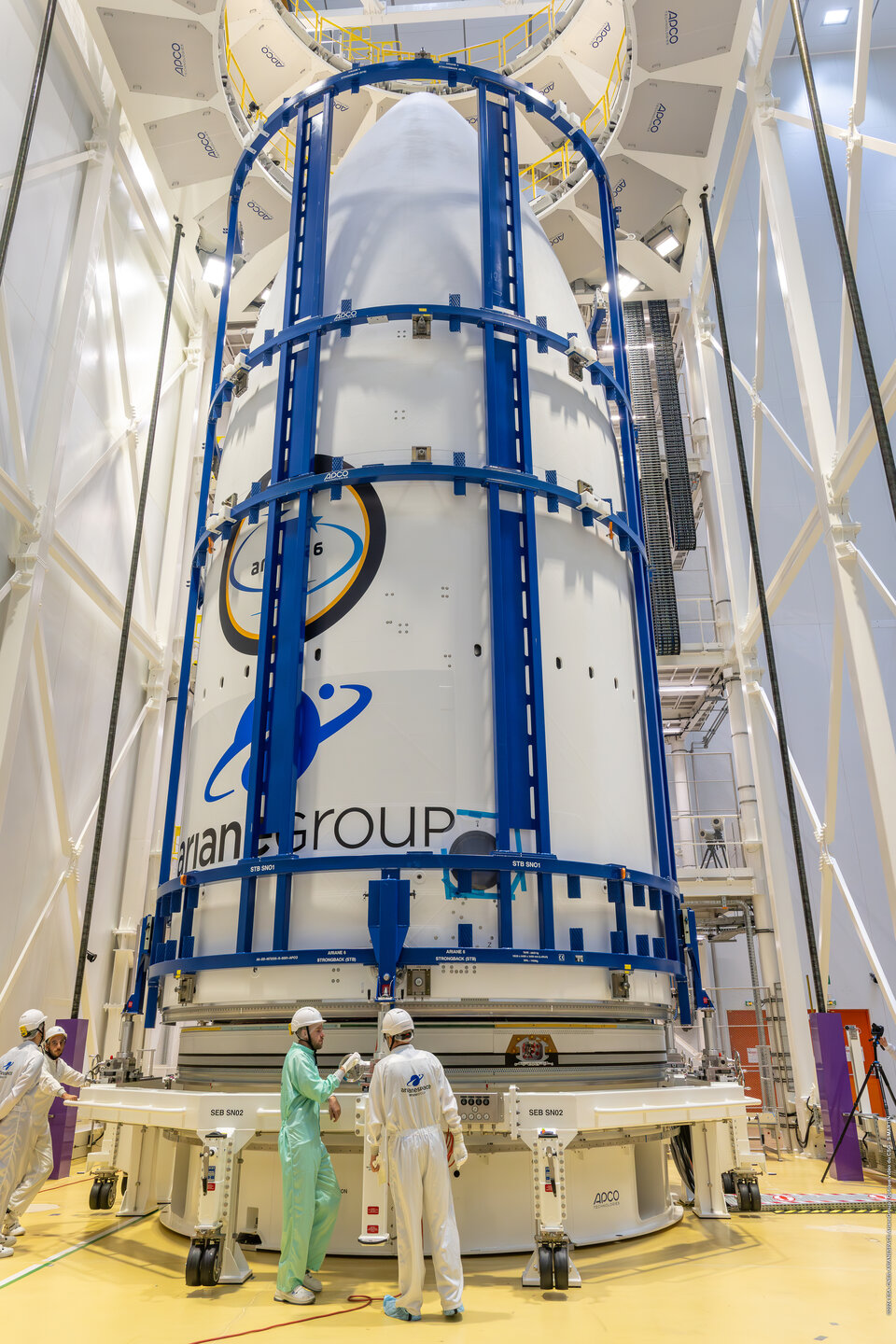
“Ariane 6 was designed and developed to secure Europe’s independent access to space,” explains Toni Tolker-Nielsen, ESA's Director of Space Transportation.
“With the first launch of this new heavy-lift rocket, Europe is back in space. Space activities are becoming an integral part of any modern economy, Ariane 6 will ensure Europe is not missing out and will serve its exploration and scientific missions”.








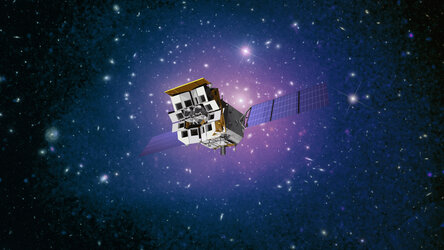





 Germany
Germany
 Austria
Austria
 Belgium
Belgium
 Denmark
Denmark
 Spain
Spain
 Estonia
Estonia
 Finland
Finland
 France
France
 Greece
Greece
 Hungary
Hungary
 Ireland
Ireland
 Italy
Italy
 Luxembourg
Luxembourg
 Norway
Norway
 The Netherlands
The Netherlands
 Poland
Poland
 Portugal
Portugal
 Czechia
Czechia
 Romania
Romania
 United Kingdom
United Kingdom
 Slovenia
Slovenia
 Sweden
Sweden
 Switzerland
Switzerland


























